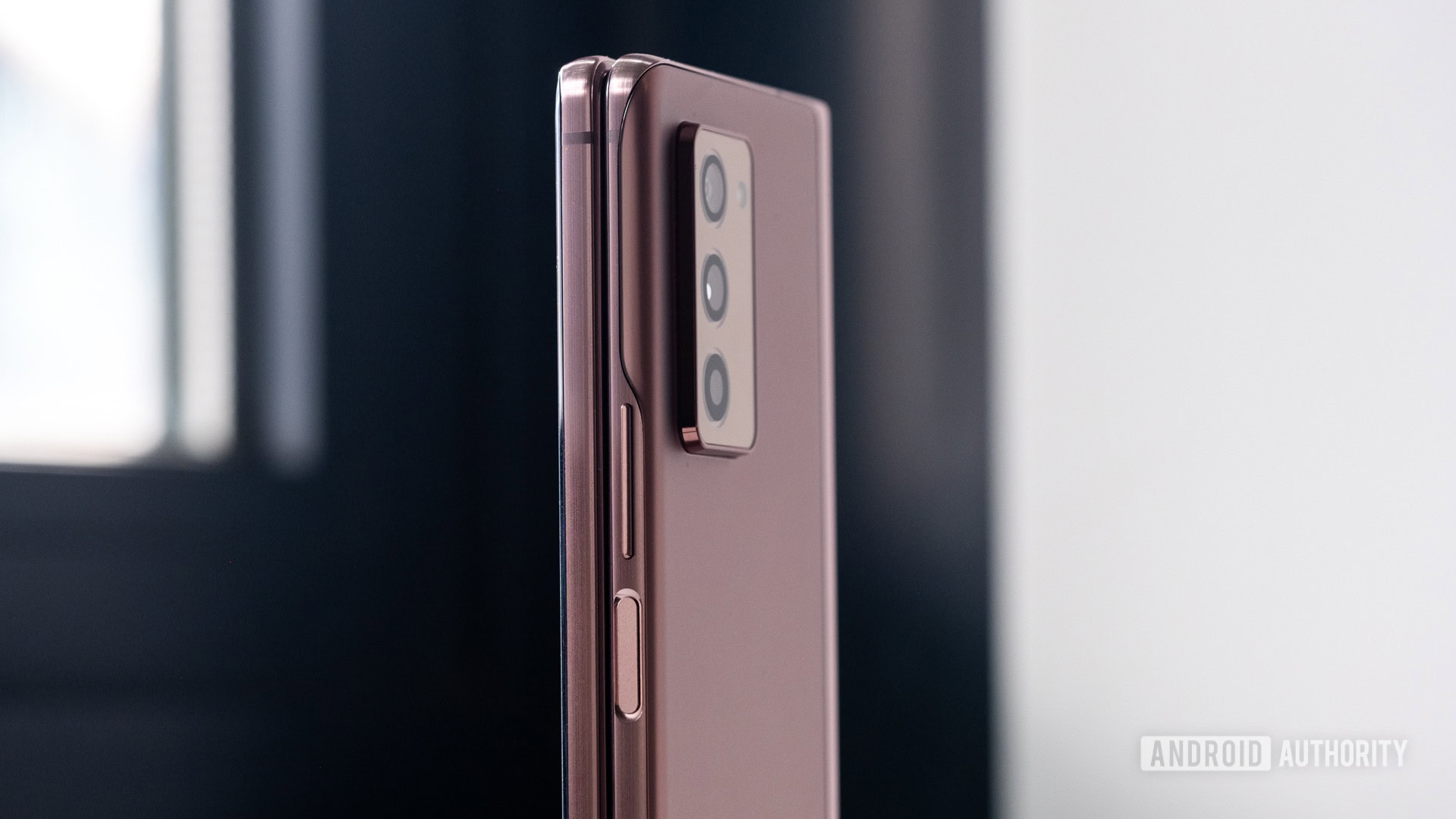Affiliate links on Android Authority may earn us a commission. Learn more.
Samsung's future foldables could feature quirky rotating cameras
Published onJune 18, 2021

- Samsung has patented a quirky rotating camera design for foldable phones.
- The module rotates 180-degrees to face the front or rear, depending on device orientation.
- This would allow Samsung to use a single camera array on its foldable phones.
Samsung is working on a foldable phone design with a rotating camera stalk, according to a new patent filed to WIPO. Spotted by MySmartPrice, the patent published this week showcases Samsung’s potential solution to the camera placement woes inherent in foldable phones’ design.
According to drawings, the stalk placed on the phone’s top corner or outside edge rotates 180-degrees to face the screen or rear of the foldable phone. The camera body can do this automatically through a sensor that detects device orientation. When folded, the cameras should point rearward. When unfolded, the camera should twist towards the user. Samsung also demonstrates that the user has control over camera positioning through a software toggle. Therefore, this design would allow the foldable phone to shoot selfies and rearward shots with the same camera array.
Rotating camera for foldable phones: The pros and cons
Samsung’s no stranger to double-duty camera designs. It recently patented a corkscrew camera system that pops out of a phone’s body. The Galaxy A80 also packed a flip-up module that also doubled as a primary rear and selfie shooter array. This demonstrated the value of a movable camera system.
The benefits of such a design on a foldable is also apparent. For instance, it would allow Samsung to install just one primary array of sensors for both selfie and primary camera shooting duties. The Galaxy Z Fold 2 features a selfie camera, a cover camera, and three primary rear shooters. Reducing the number of cameras with a rotating design could save costs. In addition, the design may also free up valuable space for a larger battery or other components.
Other companies are experimenting with similar designs, too. The likes of Xiaomi have several patents for rotating cameras, albeit not mounted to foldable phones.
On that note, do we really need more moving parts on a fragile foldable phone? These may introduce more potential failure points on devices that demand gentle handling. Although the durability of foldable phones has improved since the Galaxy Fold’s debut, it may still be a concern for potential buyers.
Considering the patent’s publishing date, Samsung may be actively developing this design. However, it’s unclear if we’ll ever see it debut on a future consumer-ready foldable. You definitely shouldn’t expect this to feature on the Galaxy Z Fold 3.
What are your thoughts on Samsung’s rotating camera patent? Let us know in the comments below!